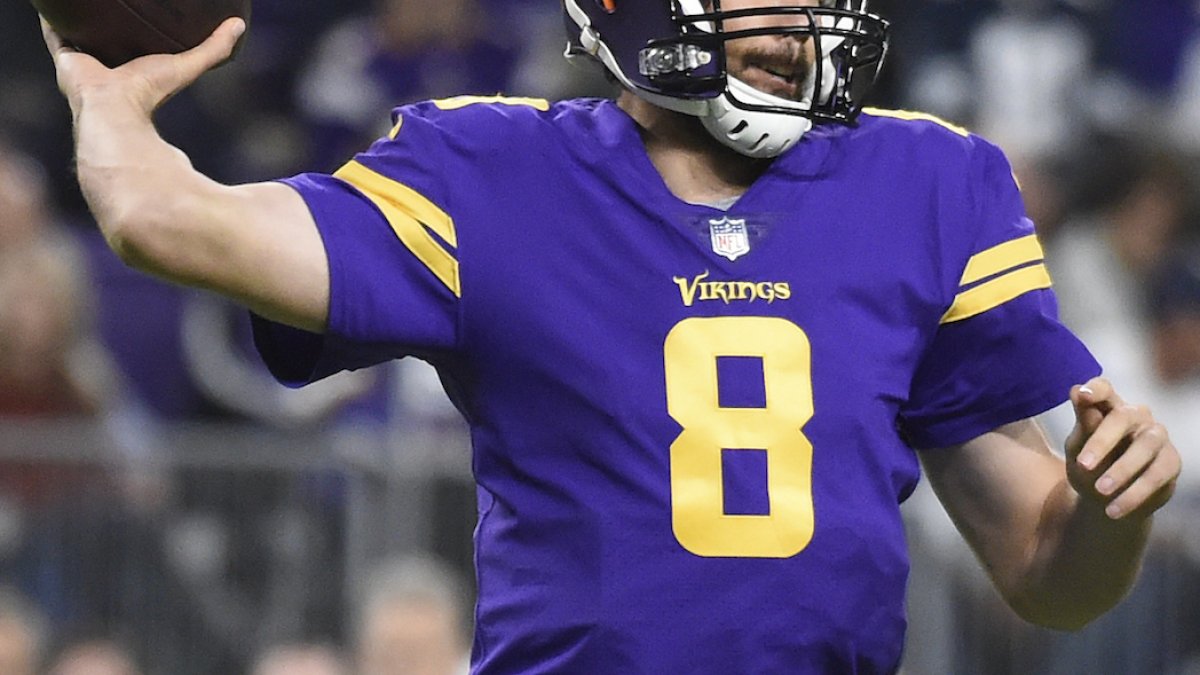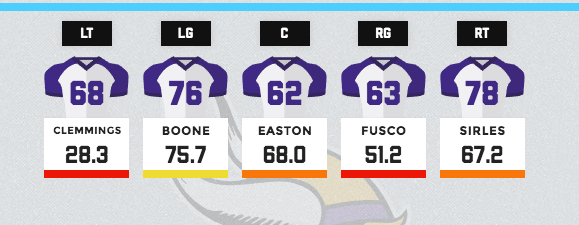The Vikings dropped yet another game on Thursday, this time against the 11-1 Cowboys, losing their sixth game out of the last seven. Although things may look pretty hopeless for Minnesota right now, this team remains at .500, and is just a game back in the division (pending the results of the rest of Week 13).
It’s tough to think of a team that has been more consistently assaulted with injuries and losses to key personnel all season long than Minnesota, a team that had Super Bowl aspirations before the season began, and is now just desperately trying to reach the playoffs.
Quarterback Teddy Bridgewater’s presence on the sideline during the game against Dallas last night served only as a reminder of what might have been for this team.
When Bridgewater went down—due to a freak, non-contact injury before the season had even begun—the Vikings felt that this team was good enough on paper. The loss of Bridgewater was such a fatal one to the team’s season that they needed to make something big happen to address the position; hence, Sam Bradford's arrival.
The trade for Bradford eight days before the season began sent Philadelphia the Vikings’ first-round pick in 2017, and a 2018 conditional fourth-rounder, that can rise as high as a second-round pick if Minnesota actually makes something of this season. The more this season unfolds, the worse that trade looks, but it remains a move that had to be made, and one that actually did what it was supposed to for this team.
Bradford is not the reason the Vikings have lost six games—though it’s fair to pin the second Detroit loss directly on him, I suppose, since his horrible interception wrapped that game up—but he is one of the biggest reasons behind a few of their first five victories.
Bradford’s play has dropped off as the season has worn on, but it’s almost a direct correlation to how badly the pass protection has deteriorated in that time. Matt Kalil had many faults as a starting left tackle, but the lowest grade he ever achieved over a season was 43.8 in 2014. Last season, he was at 68.4, but his replacement, T.J. Clemmings, is currently grading at 28.3, on a scale of 0–100. That is the fourth-lowest grade we have ever seen from an offensive tackle over a full season (since PFF began grading players in 2006), and the second-lowest from a left tackle, despite the Vikings trying to get rid of the ball as fast as humanly possible.
Bradford now has the league’s fifth-fastest average-time-to-throw figure, at 2.3 seconds and that number has only been getting smaller as the year has progressed. He has the league’s lowest average depth of target, at 6.5 yards, lower even than pathologically conservative Chiefs QB Alex Smith. There is no offense in the game that makes life easier for its offensive linemen in terms of how long they have to block for, but the Vikings, and Clemmings in particular, just can’t hold up.
Early in the season, Bradford’s passer rating under pressure was a ridiculous 108.0. Typically, playing under pressure drops a QB’s passer rating in the region of 30.0 points, and this season, the league average passer rating under pressure is just 65.4. Even now, Bradford’s is still 87.5, the third-best figure in football behind only Tom Brady (93.6) and Russell Wilson (88.9).
Bradford may not be one of the league’s best quarterbacks, but he has played more than well enough for this team to compete offensively—if only the O-line had been even close to viable.
With the loss of Kalil, injuries at other spots, and just straight awful play at others, the Vikings' offensive line, on its best days, has been average; on its worst, has been prohibitively bad. There are very few QBs in the league that could win games consistently with this kind of pass protection, even fewer within this offensive scheme, and Bradford not being one of them shouldn’t be held against him, or render the trade a mistake.
With Bridgewater’s injury still a major question mark, the Vikings may need Bradford for 2017. They can now concentrate on repairing that offensive line in the offseason, clearing out the dead weight, freeing up some cap space by jettisoning the exorbitant contract of Adrian Peterson that has hung from the salary cap like a millstone for awhile now, and actually remain in contention going forward.
Without the move for Bradford, it’s likely the team would be in a similar spot—maybe with a few more losses—but with that 2017 first-round pick intact, and potentially with a huge question mark at QB.
Minnesota’s season may well be unspooling; given the state of the NFC North, however, it is far from lost. The trade for Bradford remains a move the team had to make, for 2017 as much as for 2016. The single-biggest issue facing this team is not at QB, but rather how to repair an entire offensive line in the space of an offseason. Without successfully navigating that challenge, it really doesn't matter who is at quarterback for the Vikings.




 © 2024 PFF - all rights reserved.
© 2024 PFF - all rights reserved.